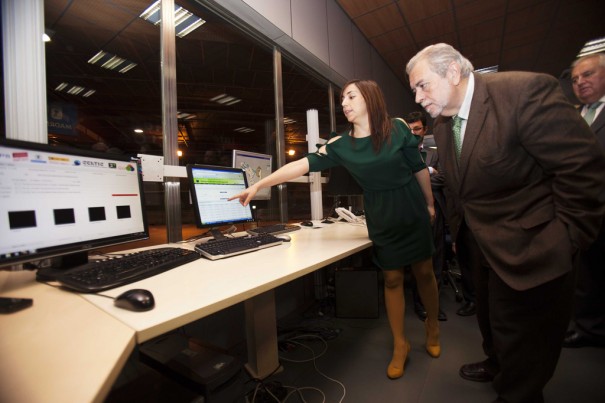Madrid prepares an innovative video surveillance system for transport infrastructures
The Community of Madrid has launched on an experimental basis, at the Moncloa Interchange, A project to improve safety in large transport infrastructures that allows to identify in real time any risk situation for users.
The Moncloa Interchange in Madrid has a new experimental security system, Designed exclusively to cover large transport infrastructures, that will automatically identify possible risk situations for users, locating and notifying security personnel in real time. It is a pilot test based on artificial vision that allows to identify each person, record its trajectory and classify it according to the objects it carries.
The Minister of Transport and Infrastructure of the Community of Madrid, Antonio Beteta, attended a pilot test of this novel analytical video system based on "computer vision", with which it is possible to instantly analyze any area of a transport infrastructure under video surveillance that, due to its configuration, requires greater attention in the tasks of supervision and control of security.
Beteta explained that the pilot test that is being carried out in the Moncloa Interchange consists of the development of an analytical video system that allows to identify individually each person who appears on the scene, Record your trajectory, as well as carry out a classification of the same depending on whether or not it carries certain types of objects.
Image analysis raises an alarm if it detects a potential risk situation such as accumulation of people, risks of mugging or abandonment of suspicious packages and, through the incident manager, Give notice to the security personnel responsible for the exchanger. The Community recalls that all these tests are being carried out respecting at all times the privacy of the people who are captured by the cameras, and that these are simulated sequences to test the effectiveness of a system that allows the mobility of users to be safer every day.
Beteta explained that this R+D initiative is part of the European innovation project HNPS (Heterogeneous Network for European Public Safety), developed by 16 companies from countries like France, Luxembourg, Germany, Netherlands and Spain, where the public-private collaboration of entities such as the Polytechnic University of Madrid is being fundamental, Telefónica I+D, Gowex and SICE (technical coordinator of the HNPS pilot). The analytical video system has been developed by the Visual Telecommunications Application Group of the E.T.S.I. of Telecommunications of the UPM).
You liked this article?
Subscribe to our RSS feed And you won't miss anything.




